Abstract
A study was undertaken at the main PROFAMILIA clinic in Bogota, Colombia to compare the effectiveness of nurses and physicians in the delivery of family planning services. Contraceptive method continuation was the major outcome variable in this analysis. Clients were randomly assigned to physicians or nurses on their first visit and for the duration of care. On all revisits, data were collected pertaining to method prescribed, side effects, pregnancy, and method changes. There was a field survey at eight months to locate clinic drop-outs and determine their contraceptive use status. There were no significant differences in method continuation between clients who received services from physicians and those who received services from nurses. At nine months, the overall continuation of the first method prescribed was 79.1 per cent in the physicians' group and 75.8 per cent in the nurses' group (t = 1.057, p greater than .20). When controlling for first method used, the IUD users in the physicians' group had a continuation rate of 86.1 per cent and in the nurses' group 84.0 per cent (t = 0.556, p greater than .50). Of the pill users who received services from physicians, 78.1 per cent were continuing at nine months and 74.3 per cent of the pill clients in the nurses' group were continuing at nine months (t = 0.573, p greater than .50). There were no differences in pregnancy rates, side effects rates, and method change rates between the two groups. It may be concluded that these nurses were as effective as physicians in the delivery of family planning services.
Full text
PDF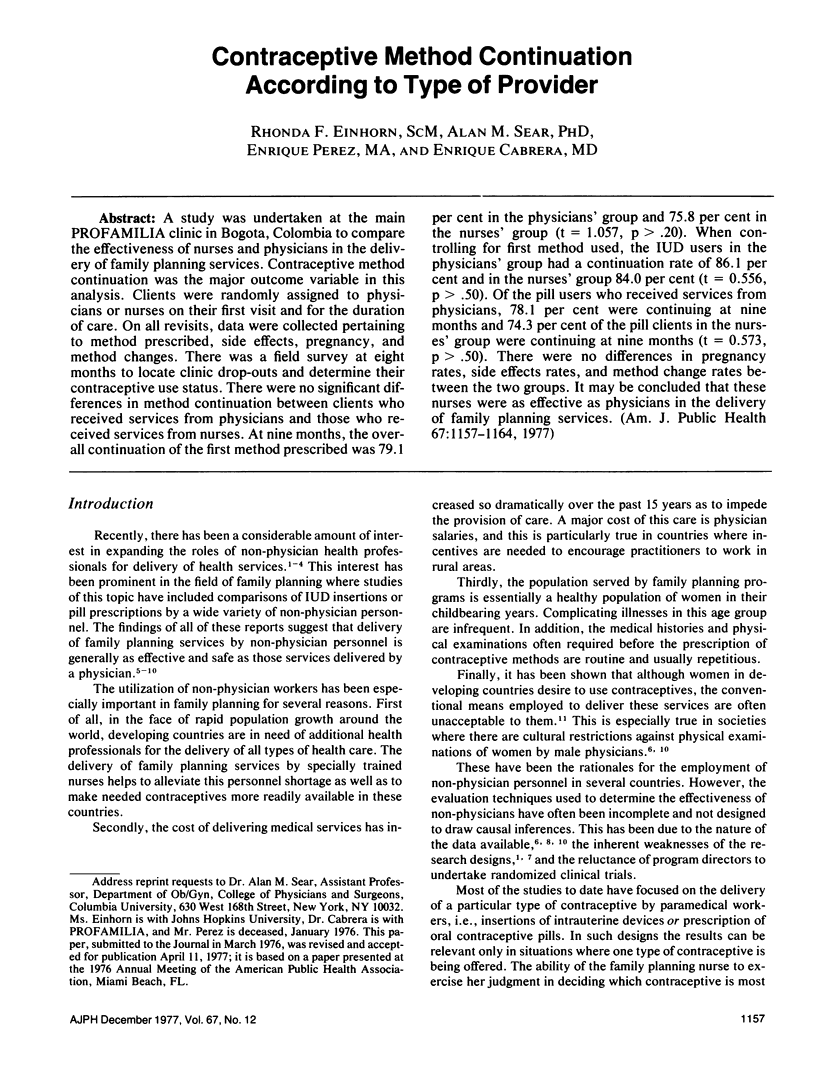
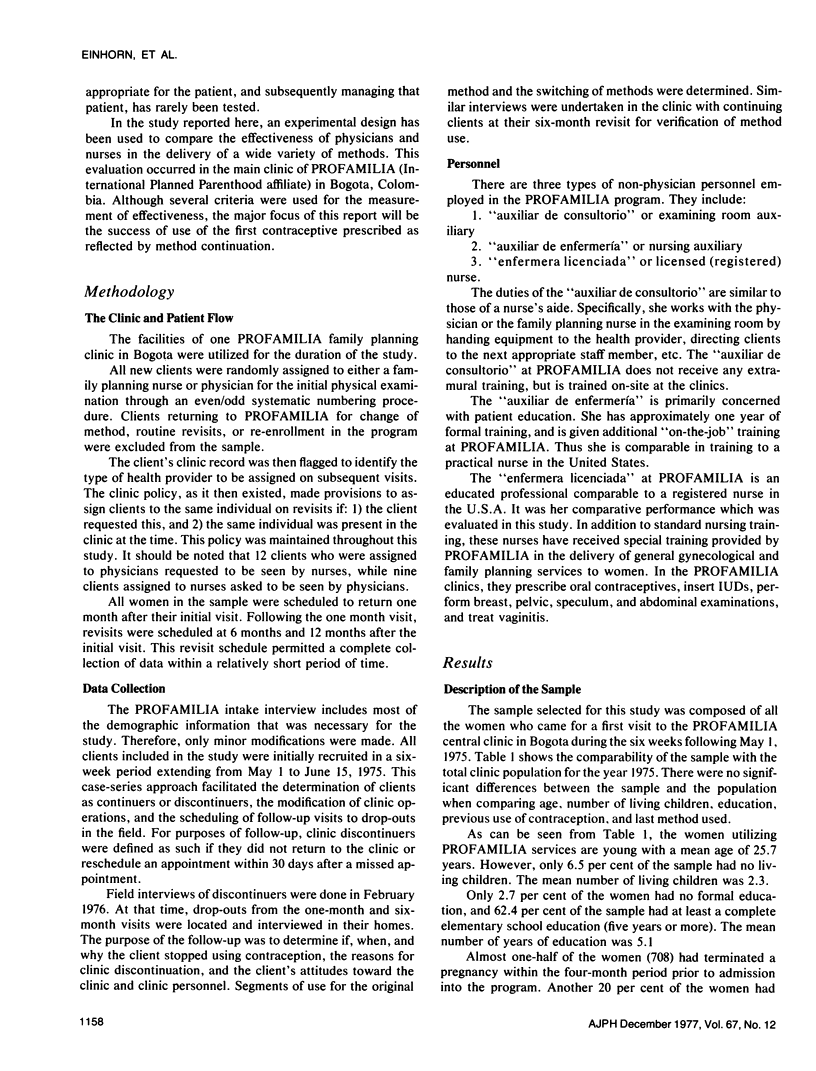
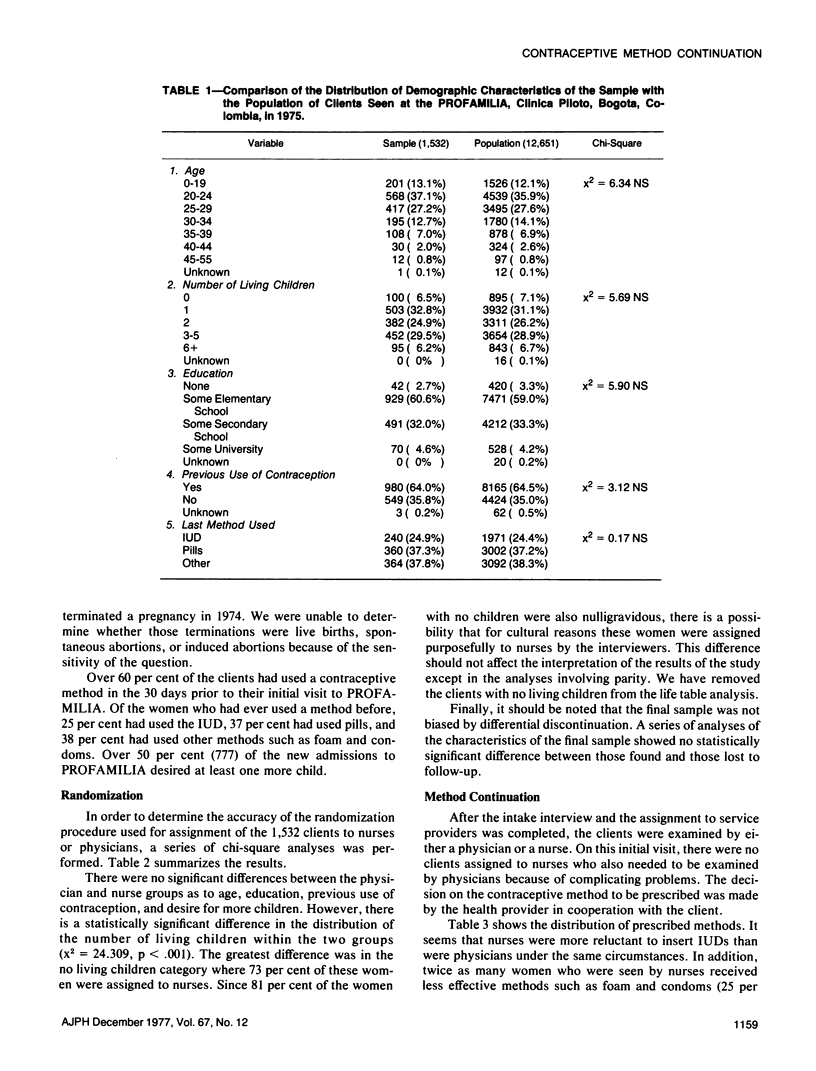
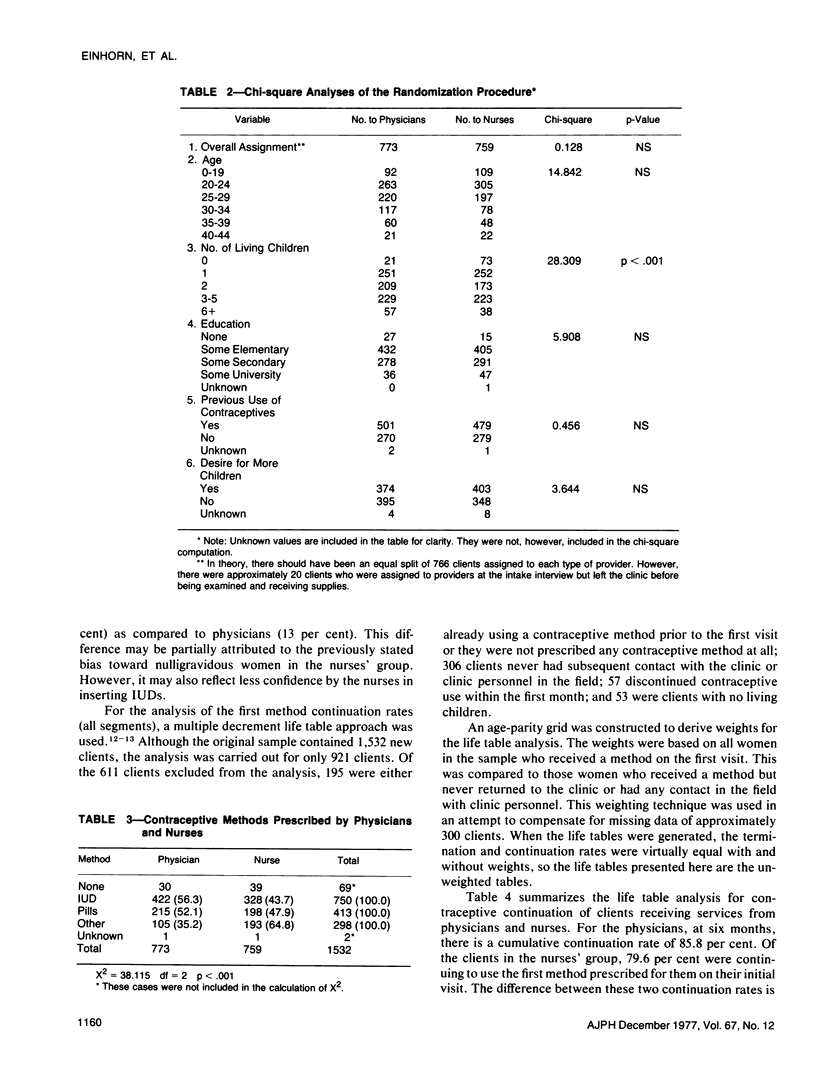

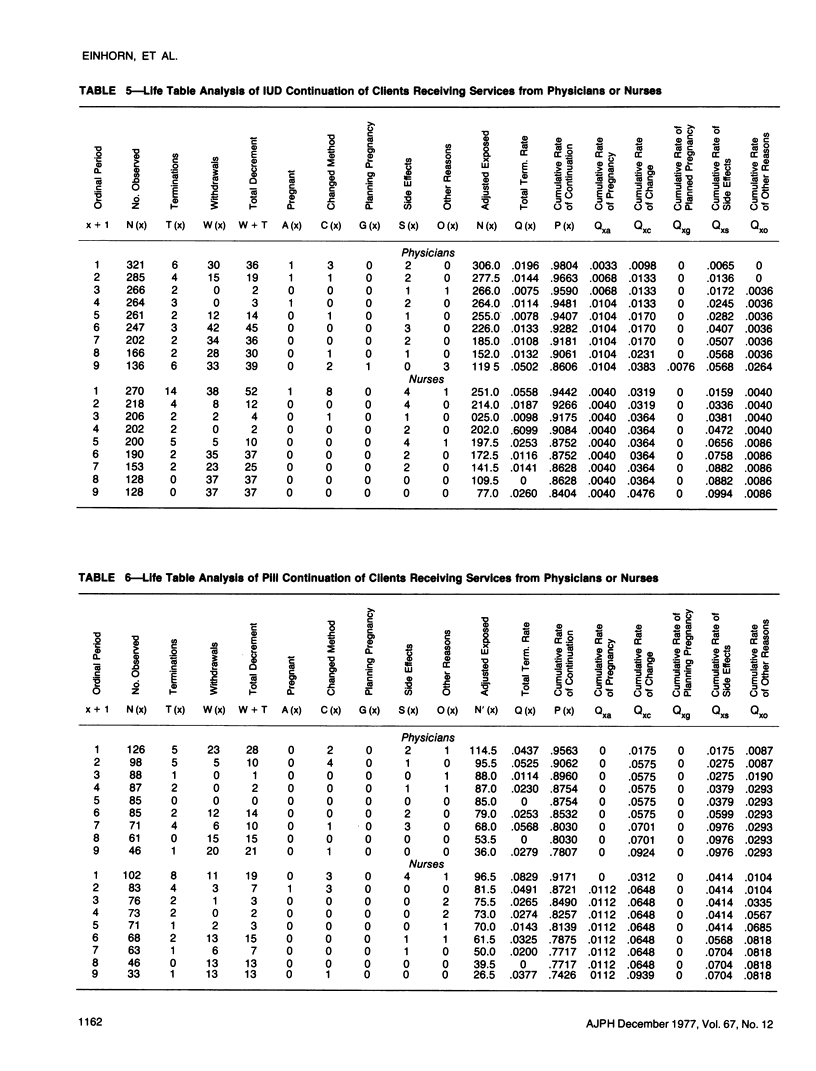

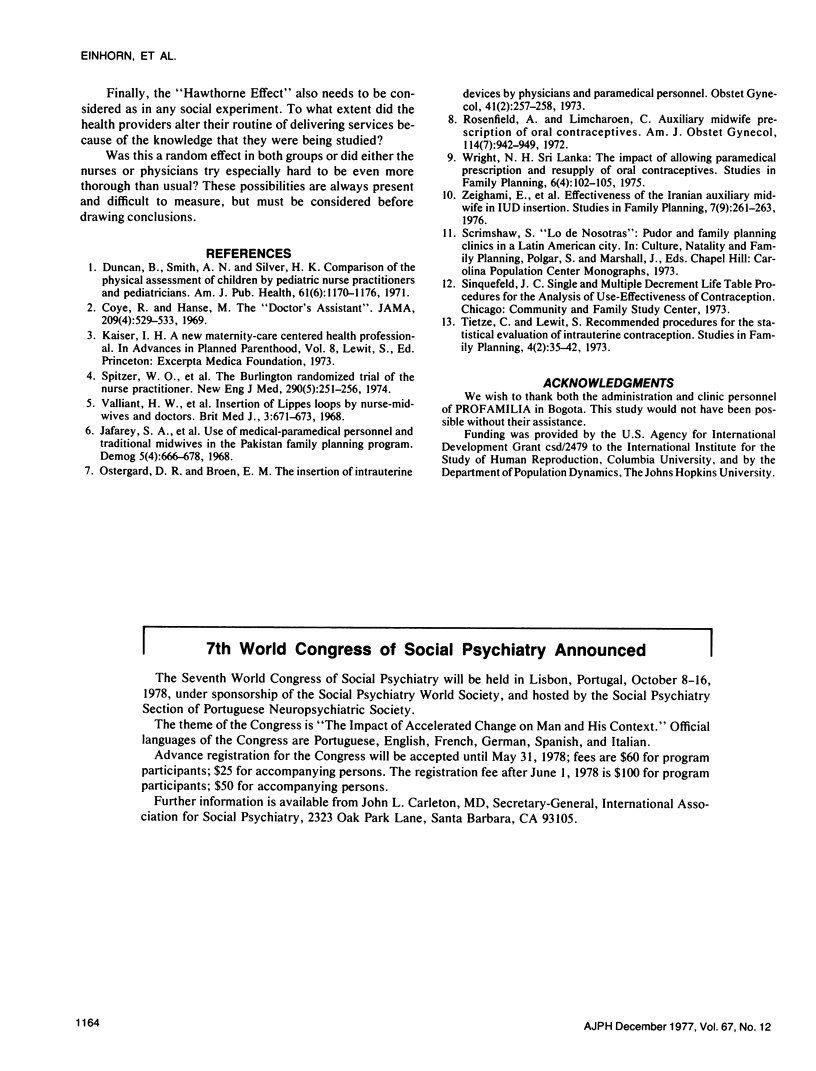
Selected References
These references are in PubMed. This may not be the complete list of references from this article.
- Coye R. D., Hansen M. F. The "doctor's assistant". A survey of physicians' expectations. JAMA. 1969 Jul 28;209(4):529–533. [PubMed] [Google Scholar]
- Duncan B., Smith A. N., Silver H. K. Comparison of the physical assessment of children by pediatric nurse practitioners and pediatricians. Am J Public Health. 1971 Jun;61(6):1170–1176. doi: 10.2105/ajph.61.6.1170. [DOI] [PMC free article] [PubMed] [Google Scholar]
- Ostergard D. R., Broen E. M. The insertion of intrauterine devices by physicians and paramedical personnel. Obstet Gynecol. 1973 Feb;41(2):257–258. [PubMed] [Google Scholar]
- Rosenfield A. G., Limcharoen C. Auxiliary midwife prescription of oral contraceptives. An experimental project in Thailand. Am J Obstet Gynecol. 1972 Dec 1;114(7):942–949. doi: 10.1016/0002-9378(72)90103-2. [DOI] [PubMed] [Google Scholar]
- Spitzer W. O., Sackett D. L., Sibley J. C., Roberts R. S., Gent M., Kergin D. J., Hackett B. C., Olynich A. The Burlington randomized trial of the nurse practitioner. N Engl J Med. 1974 Jan 31;290(5):251–256. doi: 10.1056/NEJM197401312900506. [DOI] [PubMed] [Google Scholar]
- Tietze C., Lewit S. Recommended procedures for the statistical evaluation of intrauterine contraception. Stud Fam Plann. 1973 Feb;4(2):35–42. [PubMed] [Google Scholar]
- Vaillant H. W., Cummins G. T., Richart R. M., Barron B. A. Insertion of Lippes loop by nurse-midwives and doctors. Br Med J. 1968 Sep 14;3(5619):671–673. doi: 10.1136/bmj.3.5619.671. [DOI] [PMC free article] [PubMed] [Google Scholar]
- Wright N. H. Sri Lanka: the impact of allowing paramedical prescription and resupply of oral contraceptives. Stud Fam Plann. 1975 Apr;6(4):102–105. [PubMed] [Google Scholar]
- Zeighami E., Zeighami B., Eftekhari A. E., KhoshNEVIS P. Effectiveness of the Iranian auxiliary midwife in IUD insertion. Stud Fam Plann. 1976 Sep;7(9):261–263. [PubMed] [Google Scholar]


